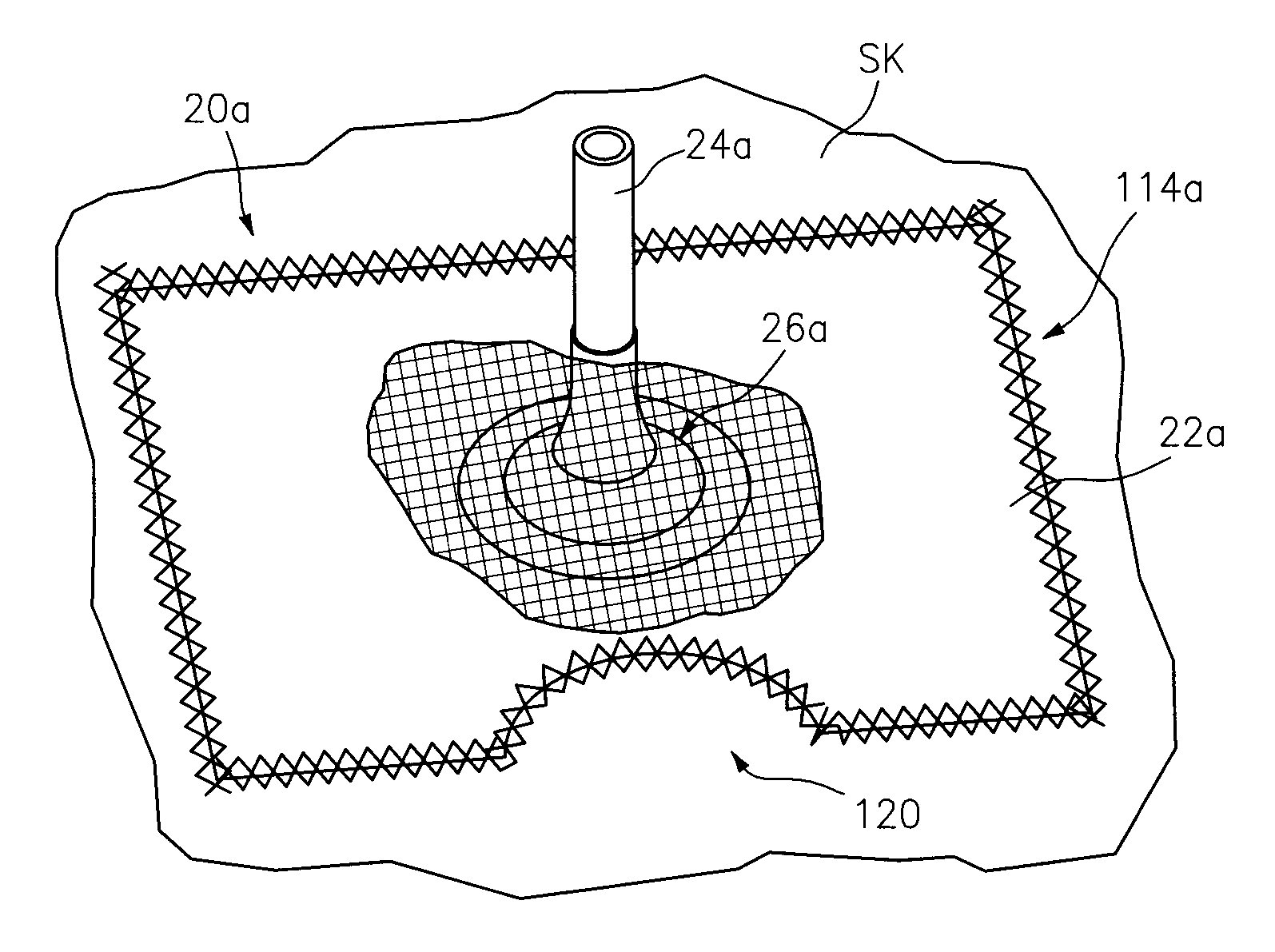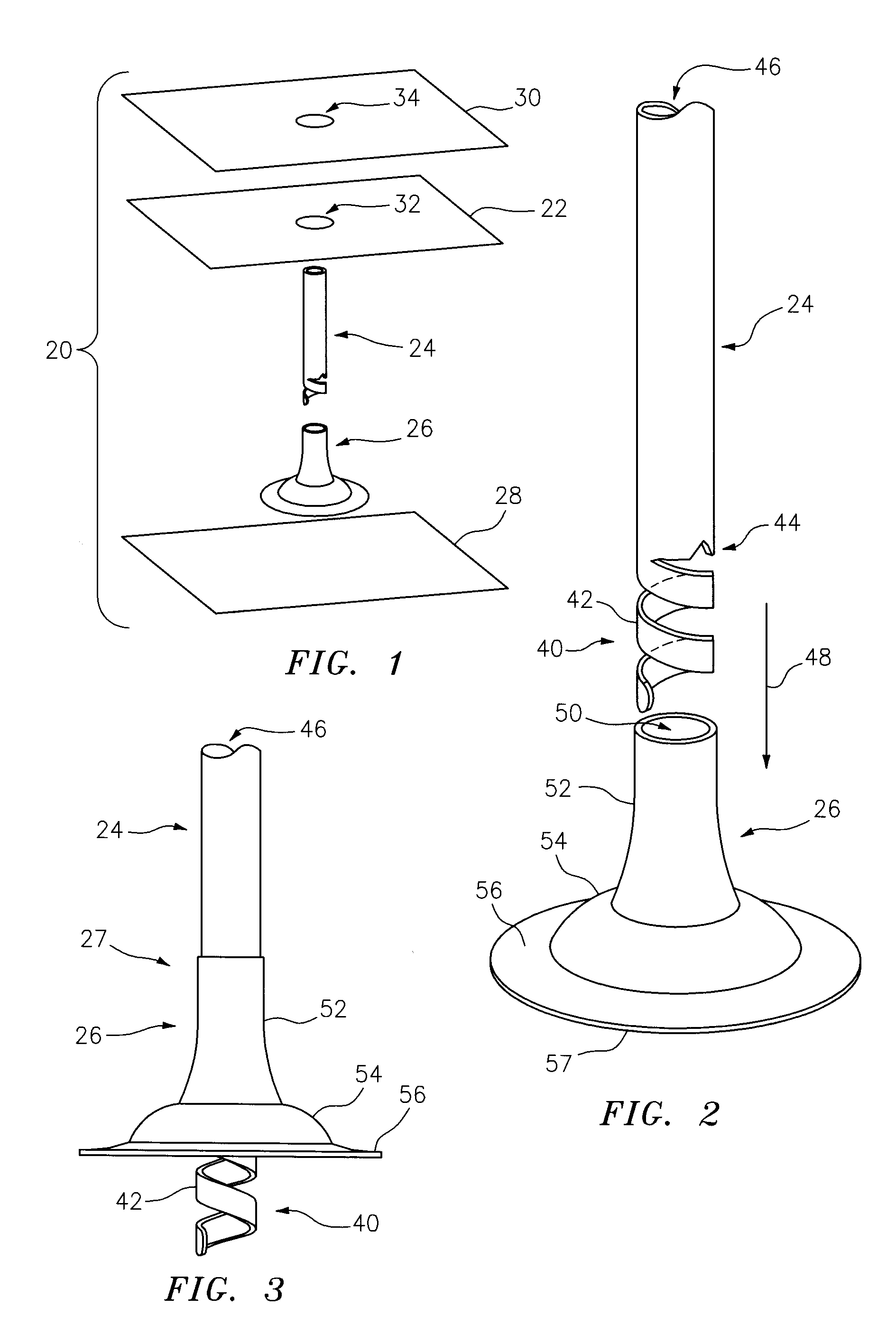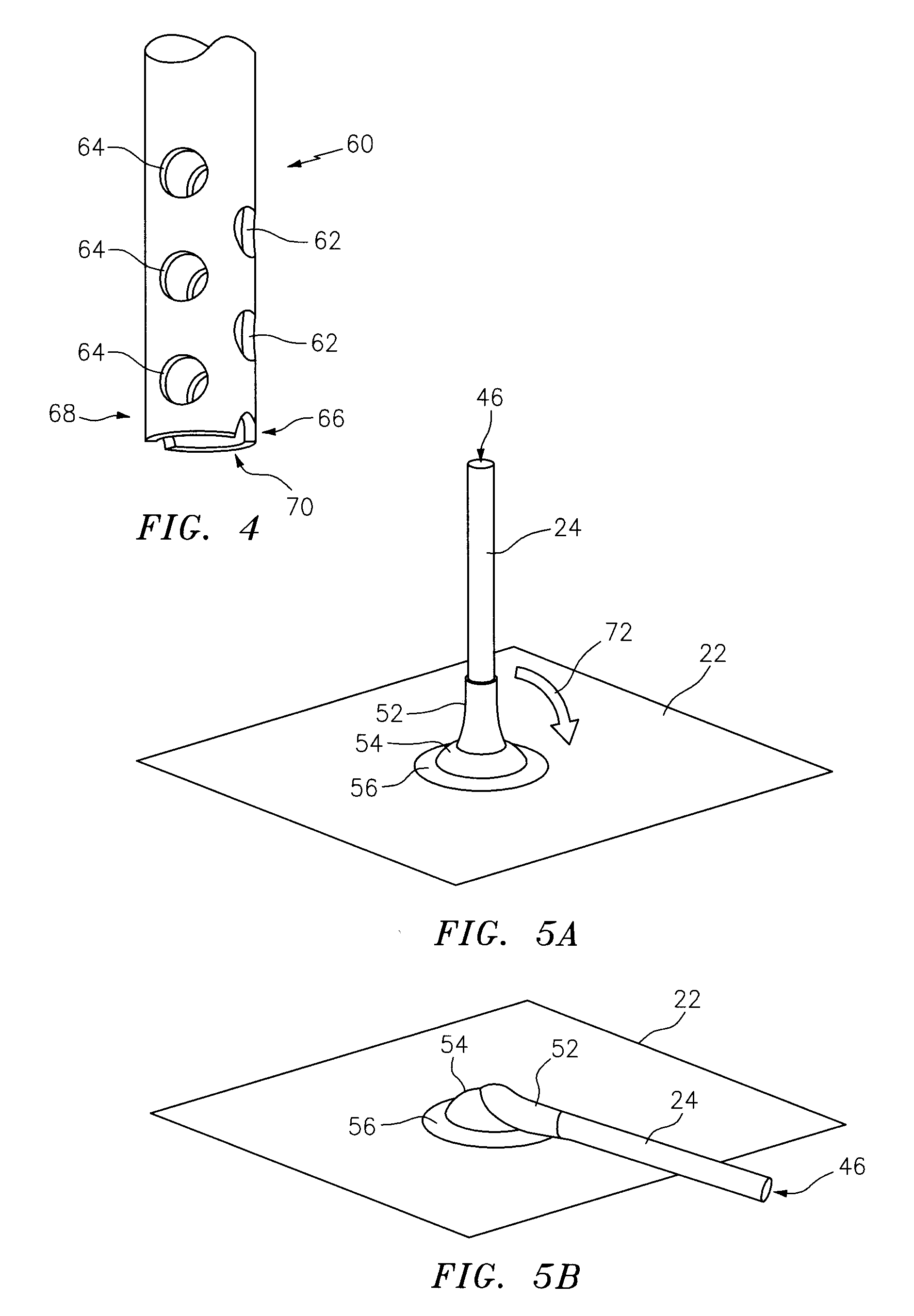Modifiable occlusive skin dressing
a skin dressing and occlusive technology, applied in the field of dressings, can solve the problems of limiting the mobility of patients, limiting the life of the batteries between charges, and the safety limit of the minimum blood flow rate possible, so as to reduce the possibility of exsanguination of patients
- Summary
- Abstract
- Description
- Claims
- Application Information
AI Technical Summary
Benefits of technology
Problems solved by technology
Method used
Image
Examples
Embodiment Construction
[0088]This invention may be accomplished by a kit, dressing system or method utilizing a drape formed as a thin sheet of an organic, preferably elastomeric material, substantially impervious to fluid transfer of air and bodily fluids for preferably at least 48 hours, more preferably at least 72 hours, having first and second surfaces. Preferably, a biocompatible adhesive is disposed on, applied to or contacted with, at least the first surface of the drape. In a number of constructions, a first removable liner sheet covers the first surface of the drape and, optionally, a second removable liner sheet covers the second surface of the drape. The invention further utilizes a container of at least one sealant component that is capable of being delivered as a sealant in a liquid state at pre-selected ambient conditions, the sealant as delivered being at least partially cross-linked at least after one of drying and curing, and which is capable of at least one of drying and curing within th...
PUM
| Property | Measurement | Unit |
|---|---|---|
| pressure | aaaaa | aaaaa |
| pressure | aaaaa | aaaaa |
| pressure | aaaaa | aaaaa |
Abstract
Description
Claims
Application Information
 Login to View More
Login to View More - R&D
- Intellectual Property
- Life Sciences
- Materials
- Tech Scout
- Unparalleled Data Quality
- Higher Quality Content
- 60% Fewer Hallucinations
Browse by: Latest US Patents, China's latest patents, Technical Efficacy Thesaurus, Application Domain, Technology Topic, Popular Technical Reports.
© 2025 PatSnap. All rights reserved.Legal|Privacy policy|Modern Slavery Act Transparency Statement|Sitemap|About US| Contact US: help@patsnap.com



